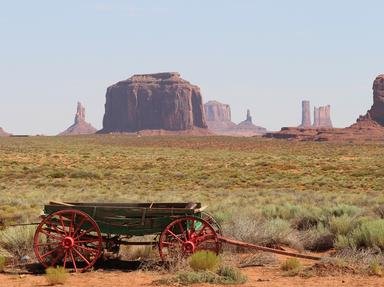Quiz Answer Key and Fun Facts
1. Clint Eastwood starred in three Revisionist Westerns during the 1970s. Of the following, which was NOT one of them?
2. Which 'sad' 1970 Revisionist Western featured Candice Bergen as a white woman who had lived with the Cheyenne for two years and sympathized with them in their struggle against white encroachment?
3. Which Revisionist Western starred Richard Harris in the title role, as an English aristocrat who was captured by the Sioux? The movie spawned two sequels.
4. The Burt Lancaster movie "Ulzana's Raid" followed the exploits of a group of Native American warriors, who left the reservation for the warpath. Which tribe was the movie about?
5. What was the secondary title or subtitle of the movie "Buffalo Bill and the Indians"? "Buffalo Bill and the Indians, or ____________", fill in the blank.
6. Which folk singer had a bit part in and wrote much of the music for the Revisionist Western "Pat Garrett and Billy the Kid" and released an album of the same name?
7. The next Revisionist Western was loosely based on 'the life and times' of a real life judge who called himself "The Law West of the Pecos". Who was this judge?
8. Which Revisionist Western featured Sidney Poitier as a scout, Harry Belafonte as a con man, and was Poitier's directorial debut?
9. Of these four movies, which teamed Sydney Pollack and Robert Redford, which one was a Revisionist Western? The movie told the story of a mountain man in the Rocky Mountains, sometime during the 19th century.
10. Arthur Penn directed two Revisionist Westerns in the 1970s. One starred Dustin Hoffman with Faye Dunaway and culminated in Custer's Last Stand. The other starred Marlon Brando with Jack Nicholson on opposite sides of the law in Montana. Which two movies were these?
Source: Author
tazman6619
This quiz was reviewed by FunTrivia editor
skunkee before going online.
Any errors found in FunTrivia content are routinely corrected through our feedback system.

